1. Meeting In Shopping Malls

For decades, shopping malls were the center of suburban life, a place where teenagers hung out, families spent weekends, and people browsed for everything from clothes to home décor. But the golden age of malls is fading fast, and many are struggling to stay afloat, according to PBS. Thanks to the rise of e-commerce, fewer people are making the trip to physical stores, choosing instead to shop online from the comfort of their homes. Major retailers like Sears, Macy’s, and JCPenney, once the anchors of malls, have closed dozens of locations, leaving large empty spaces that are difficult to fill.
Some malls have attempted to reinvent themselves, transforming into mixed-use spaces with apartments, office buildings, and entertainment centers. Others have become ghost towns, with empty storefronts and dwindling foot traffic. The pandemic only accelerated the decline, forcing more people to embrace online shopping and pushing struggling malls closer to closure. By 2030, traditional malls with department store anchors may be almost nonexistent, replaced by smaller lifestyle centers, open-air shopping districts, or entirely digital retail experiences.
2. Black Friday Shopping Sprees

Remember when people used to camp outside Best Buy, braving the cold just to be the first in line for a discounted big-screen TV? For decades, Black Friday was the ultimate shopping holiday, a day when Americans would rush to malls and department stores for deals so good they were willing to elbow strangers out of the way for them. But times have changed, and Black Friday is no longer the chaotic, in-person spectacle it once was. The rise of online shopping has made it easier for consumers to snag deals from the comfort of their homes, removing the need to physically stand in long lines at dawn, according to Yahoo Tech. Retailers have also started stretching their Black Friday promotions over weeks, further eliminating the need for a single shopping frenzy.
Another major factor in its decline is the fall of brick-and-mortar retail in general. Many major department stores, once the anchors of Black Friday madness, have closed locations or gone out of business entirely. Sears, JCPenney, and Macy’s have all faced significant downsizing, while malls—the traditional epicenter of Black Friday shopping—are struggling to stay relevant. Inflation and changing consumer habits have also played a role, as many people now prioritize experiences over material goods. Add in growing concerns about worker treatment and corporate greed, and Black Friday’s days as an annual cultural event may be numbered. By 2030, it could be just another regular shopping day, with the best deals happening quietly online.
3. Cash Transactions

There was a time when cash was the default way to pay for almost everything—gas, groceries, even a cup of coffee. But over the past decade, cash has been on a steady decline, and in just a few more years, it might become completely obsolete, according to USA Today. Digital payment methods, including credit and debit cards, mobile wallets like Apple Pay and Google Pay, and even cryptocurrency, have made cash unnecessary for most transactions. Many younger Americans don’t even carry physical money anymore, preferring the convenience and security of electronic payments.
Businesses have also been shifting away from cash, with some establishments going completely cashless. Many restaurants, retail stores, and even vending machines now only accept digital payments, citing security concerns and faster transaction speeds as the main reasons. The pandemic accelerated this shift, as concerns over hygiene made people wary of handling physical bills and coins. The U.S. Mint even experienced a coin shortage during COVID-19, which highlighted just how few people were using cash regularly. By 2030, paper money may be seen as outdated and impractical, used only in rare situations or by those resistant to change.
4. Snow Days for Schools
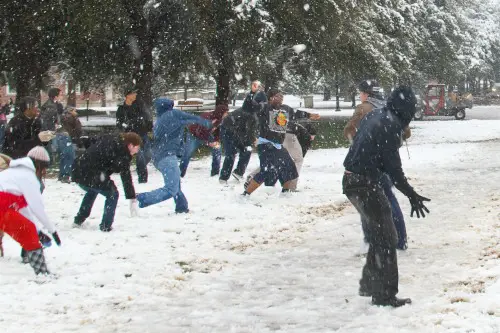
For generations, snow days were one of the best parts of winter—an unexpected day off where kids could sleep in, go sledding, and drink hot chocolate instead of sitting in a classroom. But thanks to advancements in remote learning, snow days are starting to disappear, according to The New York Times. Many school districts now require students to log into virtual classrooms on days when severe weather prevents in-person attendance, turning what was once a day of freedom into just another school day, only online.
While this change makes sense from an educational standpoint, it’s a cultural loss. Snow days weren’t just about missing school; they were about the joy of spontaneity, the thrill of waking up to find out that nature had pressed “pause” on the world for a day. With climate change also affecting snowfall patterns in many regions, traditional snow days are becoming even less common. By 2030, the classic American snow day may be a thing of the past, replaced by digital learning and stricter attendance policies.
5. Landline Phones

If you grew up in the 20th century, chances are you remember the sound of a landline phone ringing in your house. Maybe you even had a corded phone mounted on the wall or a rotary dial model in your grandparents’ home. But in the age of smartphones, landlines are quickly becoming a thing of the past. According to CDC data, more than 70% of American households now rely exclusively on cell phones, a percentage that continues to climb every year.
Phone companies aren’t making it easier for landlines to survive either. Many service providers are actively phasing out traditional copper-wire phone lines, replacing them with VoIP (Voice over Internet Protocol) systems that work over broadband connections. The only remaining landline users tend to be older generations who are hesitant to switch, businesses with legacy phone systems, and people in rural areas where cell service is unreliable. But as mobile technology improves, even those groups will likely abandon landlines. By 2030, having a landline phone may be as outdated as owning a typewriter, according to The Washington Post.
6. Cable TV Subscriptions
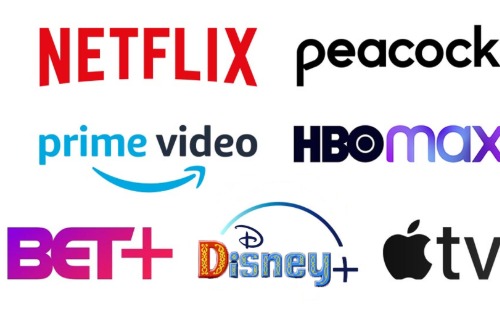
For decades, cable TV was the primary way Americans consumed entertainment. Families gathered around the television to watch network shows, catch live sports, and channel-surf through hundreds of options. But cable is rapidly losing its dominance, thanks to the rise of streaming services like Netflix, Hulu, and Disney+. More households are cutting the cord every year, opting for on-demand content instead of paying for expensive cable packages filled with channels they don’t watch.
Even live sports, one of the last major reasons people kept cable, is starting to shift to streaming platforms. Major networks are launching their own streaming services, and younger generations are growing up in a world where traditional cable is irrelevant. With the convenience, affordability, and flexibility of streaming, it’s hard to see cable lasting much longer. By 2030, it may be completely replaced by internet-based TV options.
7. Paper Newspapers
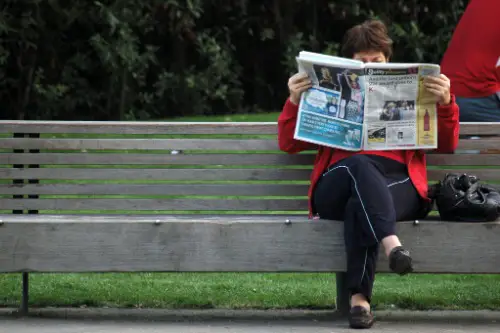
There was a time when the morning newspaper was a household staple, arriving on doorsteps before sunrise and spreading across breakfast tables as people caught up on the latest news. But the world has changed, and print newspapers are struggling to survive. Digital news has taken over, with most people getting their information from websites, social media, and news apps rather than physical newspapers. The shift isn’t just about convenience—it’s also about cost. Advertising revenue for print publications has collapsed, and fewer people are willing to pay for a subscription when they can access news for free online.
Local newspapers have been hit the hardest. Many small-town papers have shut down or gone online-only, leaving communities without a dedicated local news source. Even major newspapers like The New York Times and The Washington Post now prioritize their digital editions over print. With the cost of printing and distributing physical newspapers rising and readership declining, it’s likely that by 2030, the tradition of flipping through a fresh paper in the morning will be a thing of the past. While some specialty or nostalgia-driven publications may persist, the daily print newspaper will likely be a relic of another era.
8. Drive-in Movie Theaters
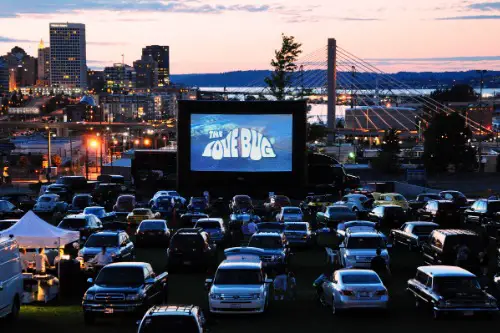
Drive-in movie theaters were once a beloved part of American culture, peaking in popularity during the 1950s and ‘60s. Families, couples, and groups of friends would pack into their cars, grab snacks, and watch movies under the stars. However, drive-ins have been on the decline for decades, with many shutting down due to rising land costs, expensive digital projection upgrades, and the growing dominance of indoor multiplex theaters.
The pandemic temporarily revived interest in drive-ins as a socially distanced entertainment option, but that resurgence was short-lived. Streaming services, which provide instant access to thousands of movies at home, make it harder for drive-ins to compete. Additionally, urban sprawl and real estate development mean that many former drive-in locations have been repurposed for housing or commercial use. By 2030, only a handful of drive-ins may remain as niche attractions or historical sites, but the golden age of watching movies from your car is almost certainly over.
9. Writing Checks

Once upon a time, writing a check was an everyday necessity—whether paying rent, buying groceries, or sending money to a friend. But in today’s fast-moving digital world, checks have become almost obsolete. Online banking, peer-to-peer payment apps like Venmo and Zelle, and credit card transactions have made the process of writing, mailing, and depositing checks seem unnecessarily slow and cumbersome.
Even businesses that once relied heavily on checks, such as landlords and utility companies, are moving toward digital payments. Some stores don’t even accept checks anymore, viewing them as a security risk due to fraud concerns. Banks, too, are encouraging customers to go paperless, making checkbooks an outdated relic. While some older individuals and small businesses still use them, checks are rapidly fading from daily life. By 2030, writing a check may be as uncommon as using a typewriter, with digital transactions completely taking over.
10. Traditional Tipping Culture

Tipping has always been a uniquely American custom, but the way people tip is changing. In recent years, frustration over “tipflation”—where digital payment systems prompt consumers to tip for everything from a coffee to self-checkout—has led to growing resentment. At the same time, many businesses are shifting to no-tip models, opting to pay higher wages rather than relying on customer generosity to supplement employee income.
Some restaurants have already eliminated tipping entirely, building service charges into their prices instead. States with higher minimum wages for service workers are also seeing less reliance on tips. Additionally, cultural shifts are influencing tipping habits—Gen Z consumers, for example, are less likely to tip than previous generations. By 2030, the traditional expectation of tipping 15–20% in restaurants and service industries could either be radically transformed or phased out altogether, replaced by higher wages or service fees.
11. Physical Media (DVDs, CDs, and Video Games)
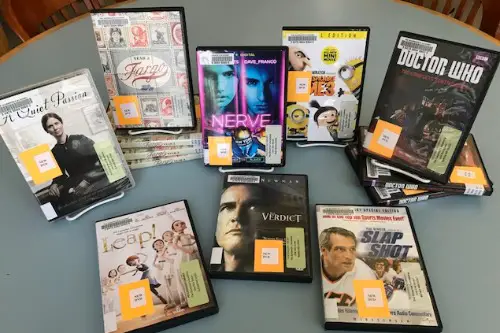
The way we consume entertainment has changed dramatically in the past two decades. DVDs and Blu-rays have been replaced by streaming services, CDs have disappeared in favor of digital downloads and music streaming, and even video games are moving away from physical discs in favor of cloud-based gaming. As internet speeds improve and storage technology advances, owning physical media is becoming less and less practical.
Some major retailers, including Best Buy, have already announced plans to stop selling DVDs and Blu-rays entirely, following in the footsteps of music stores that phased out CDs years ago. Even video game companies are pushing for digital-only releases, with some consoles no longer including disc drives. While collectors and nostalgia-driven enthusiasts may keep physical media alive in niche markets, the average consumer is already moving on. By 2030, browsing a store for a new movie, album, or game in physical form may be a thing of the past.
12. Community Parades

Local parades used to be a huge part of American culture, celebrating everything from national holidays to small-town traditions. Whether it was a Fourth of July parade with floats and marching bands or a Thanksgiving parade with giant balloons, these events brought communities together. But in recent years, many towns have cut back on parades due to budget constraints, declining participation, and logistical challenges.
Younger generations are also less engaged in these traditions. Many would rather spend time on social media or attend digital events than stand outside for hours watching a parade. Meanwhile, safety concerns and rising costs for security, insurance, and permits have made it harder for small communities to organize them. While major parades like Macy’s Thanksgiving Day Parade may continue, smaller local parades are likely to disappear by 2030, replaced by virtual celebrations or entirely new traditions.
13. Manual Transmission Cars
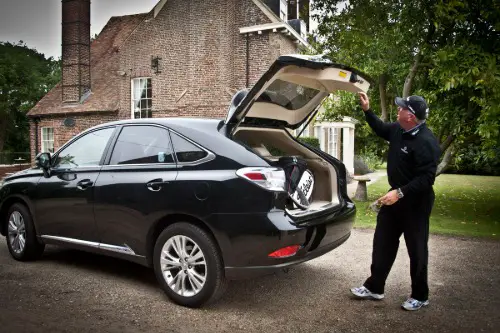
Driving a stick shift used to be a necessary skill, but these days, most Americans have never even learned how. Manual transmission cars are disappearing fast, with only about 1% of new cars sold in the U.S. having a stick shift. Automatics are simply more convenient, and with the rise of electric vehicles—which don’t even have traditional gear shifts—manual transmissions are becoming obsolete.
Even car manufacturers are phasing them out, with many brands no longer offering manual options. While sports car enthusiasts and collectors may keep them alive in niche markets, they’re no longer practical for everyday driving. By 2030, finding a new car with a manual transmission may be nearly impossible, and future generations might never even experience the challenge (or fun) of driving stick.
14. Handwritten Letters

There was a time when writing and receiving a handwritten letter was a cherished experience. People took the time to craft thoughtful messages, carefully folding them into envelopes and sending them across the country. But in the digital age, handwritten letters have all but disappeared. Emails, text messages, and social media have taken over as the primary means of communication, making letter-writing seem outdated and unnecessary.
Even greeting cards, one of the last holdouts of the handwritten tradition, are declining in popularity. Many people now send digital cards or simply post birthday messages on social media. While some romantic or nostalgic individuals still appreciate the personal touch of a handwritten note, the vast majority of Americans no longer bother. By 2030, letter-writing may be more of an artistic hobby than a common form of communication, with handwritten letters becoming rare artifacts of a bygone era.


